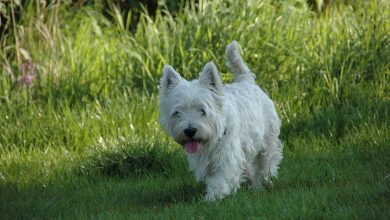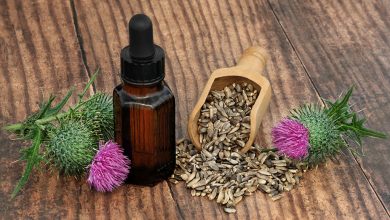Dr Iris Ege explains why too much of a good thing can be bad for your westie.
While we may think we choose the antioxidants we give our dogs, problematic ones are likely to be present in some “complete and balanced” diets.
Dietary antioxidants are often macromolecules that belong to classes that have different colours. They also have different benefits and work synergistically, thus it is best to combine them. Some help prevent certain diseases, such as cancer, while other ones work better fighting degenerative diseases.
Inflammation is part of everyday life; the immune system uses impressively dangerous substances such as hydrogen peroxide and various other Reactive Oxygen Species (ROS) to deal with pathogens.
They are short lived, highly reactive and unstable. That is great for killing pathogens but in excess can cause a chain reaction in body cells and that may damage tissues. The body has a whole system to prevent oxidative damage from both within and from outside.
Antioxidant phytochemicals are found in many foods and medicinal plants and play an important role in the prevention and treatment of chronic diseases caused by oxidative stress. Plants often possess strong antioxidant and free radical scavenging abilities, as well as anti-inflammatory properties. They are also responsible for other health benefits, such as anticancer, anti-aging, and protective action for cardiovascular diseases, diabetes mellitus, obesity, and neurodegenerative diseases.
A very popular herb with potent antioxidant action is the “golden spice” turmeric, as it contains polyphenolic curcuminoids. You may be familiar with its use for arthritis or cancer. But especially combined with other herbs turmeric is suitable for a very broad range of conditions. It is, for example, now part of a veterinary liver supplement enhancing the effect of milk thistle.
Now is the time to harvest the bright orange or red rose hips. Rose hip tea deactivates hydrogen peroxide and scavenges ROS from a white blood cell type called neutrophils. You know neutrophils probably best after they died having done their job – as puss. But they also play a role in chronic inflammation. In Australia an extract of rose hip is licensed for use in osteoarthritis in dogs.
Very high doses of rose hips have prooxidative effects in test tube experiments. Those findings occur for many antioxidants and are the reason quite a few people, including some vets, warn about supplementing. But it’s all about the dose.
My colleagues often ask why I would use something natural, that is complex, but doesn’t achieve spectacular high concentrations of one “active” ingredient. To get standardised products active, ingredients of herbs are often extracted, and the composition manipulated. I feel that it can be problematic because other ingredients often play a sometimes unrecognised but very important role, and the sum is more than its parts.
When using herbs, it is important to know their properties. Green tea is used for antioxidant properties, especially for its use as an anti-inflammatory, neuro-protective and anti-cancer herb. But please remember it also contains stimulating phytochemicals like caffeine. Using Redbush tea in the evening is probably the better option. You could have a cuppa of each a day and mix the leaves into your dog’s meal. They will also provide prebiotics for improved GI-health.
Food such as kibble and canned dog foods commonly contain added antioxidants. The shelf life is improved as antioxidants protect the fats and oils. Also, the Maillard reaction, caused by processing and responsible for the brown colour and delicious taste (to cats and dogs) inactivates naturally occurring antioxidants. So, supplementation is usually necessary.
It sounds amazing that many dog foods contain herbs like oregano, rosemary, and thyme, but the main reason is simple: they provide antioxidants to prevent degradation of the food.
Most dog kibble and tinned meats contain both Vitamin C and Vitamin E as antioxidants, which is called “mixed tocopherols” if coming from a natural source.
Unfortunately, they also commonly contain synthetic antioxidants like butylated hydroxyanisole (BAH), hydroxytoluene (BHT) and ethoxyquin which are controversial and very difficult to avoid in commercial dog food. BHA and BHT are also used in human food and have been linked to cancer. Ethoxyquin is manufactured by Monsanto who after being required to do tests with regards to carcinogenicity in the 1980s lowered the allowed level from 150ppm to 75ppm. It is still commonly used in canned dog food and in fish feed which can lead to concentrations in fish products.
On the other hand, the potent antioxidant trace element Selenium can be found for example in sardines and salmon. Please be aware that Selenium has a very narrow range between beneficial and toxic effects. Organic forms are better absorbed and less toxic. Please stay away from supplements containing the inorganic form, usually selenite, or selenate.
Recommended daily intakes for selenium in dogs are not established, but a human dose of selenium is excessive for a Westie.
Vitamin A is an important antioxidant as well. It is found in liver and while the beneficial range is not as narrow as in Selenium, too much of this vitamin causes harm in animals too.
Many fresh foods and all herbs naturally contain antioxidants. Professor Anna Hielm-Björkman from the Helsinki Veterinary School has looked at the health of dogs and how they were fed. She found that 20% of fresh ingredients in the daily diet already show marked beneficial effects.
So called superfoods often contain a lot of antioxidants. Anthocyanins give blueberries their amazing colour and are very effective antioxidants. The smaller wild bilberry contains higher concentrations and is used as an herbal remedy to strengthen blood vessels and improve eyesight.
Why not add a few blueberries to the diet? Our dog loves harvesting raspberries in our garden or blackberries on a walk.
If your dog suffers from one of the mentioned conditions why not discuss the benefits of antioxidants with a holistic referral vet who has in depth knowledge of a real food diet, herbs, and antioxidants and will work with your vet. The potential is amazing but there is no panacea and interactions between herbs, supplements, and drugs are complex and need to be considered.
You can find a local veterinary herbalist on the British Association of Veterinary Herbalists here: www.herbalvets.org.uk/find-a-herbal-vet






